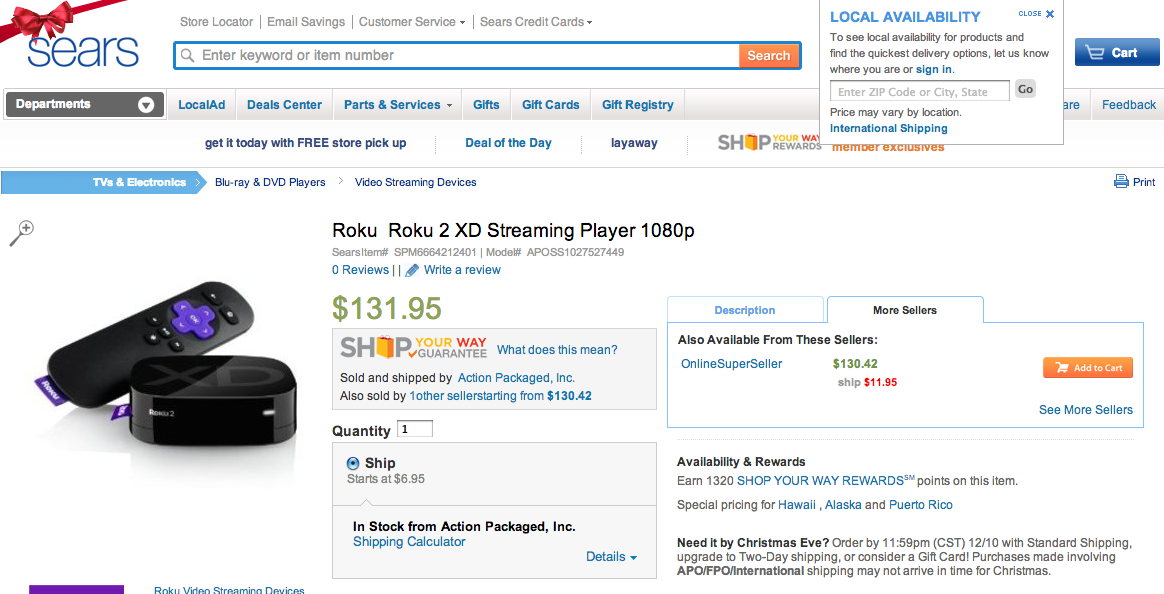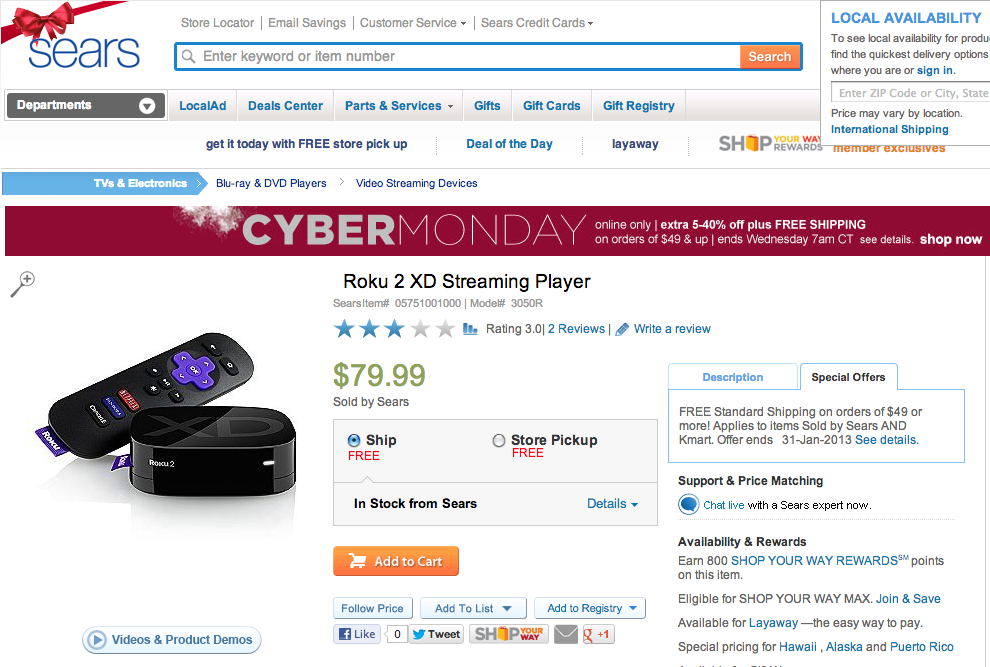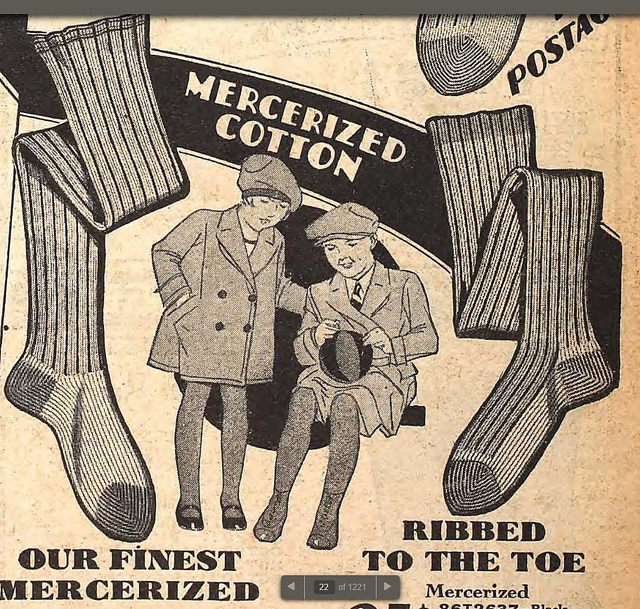Sears: An Innovator and Market Leader
In 1893, Richard Warren Sears and Alvah C. Roebuck started one of America’s retail pioneers, Sears, Roebuck and Co. The founders had some great ideas, in the earliest days they launched the famous Sears catalog to allow folks to order through mail – this was an innovation at the time because farmers used to have to come into town and haggle deals for their supplies. They made so much money that they opened a printing plant just to be able to print the infamous Sears catalog, which by the early 20th century had over 500 pages to it and sold everything a household would need, including hardware, groceries, and stoves!
 Now let’s flash forward to contemporary times…I remember walking into Sears as a youngin’ in the late 80s and 90s, mesmerized by all the floor models of toys, refrigerators, exercise equipment, and giant televisions that look ridiculous these days compared to the flat panel, magazine-thick models that exist today. The stores seemed busy, always. And salespeople were super knowledgeable about the ins and outs of the products in their respective departments, including Sears brands like Kenmore and Craftsman. Those salespeople saw their base wages decline in the late 90s but they were still on an incentivizing commission plan. Today, many of the departments have slashed commissions considerably, and some of them don’t have commissions at all anymore.
Now let’s flash forward to contemporary times…I remember walking into Sears as a youngin’ in the late 80s and 90s, mesmerized by all the floor models of toys, refrigerators, exercise equipment, and giant televisions that look ridiculous these days compared to the flat panel, magazine-thick models that exist today. The stores seemed busy, always. And salespeople were super knowledgeable about the ins and outs of the products in their respective departments, including Sears brands like Kenmore and Craftsman. Those salespeople saw their base wages decline in the late 90s but they were still on an incentivizing commission plan. Today, many of the departments have slashed commissions considerably, and some of them don’t have commissions at all anymore.
Intensified Competition: Globalization, the Internet, and Poor Marketing
Surely, the late 90s is when e-commerce started to kick in…but it also coincided with an intensifying globalization. A smaller world, allowing for cheaper goods to be accessed easier. Sears wasn’t ready for this. And neither was JC Penney, K-Mart, Hecht’s, or Mervyns, to name only a few of the retail establishments that were hit hard first by failing to forecast market trends, and second by failing to react adequately. At least it looks that way from where I’m standing. On the other hand I see that Target recognized the huge impact Wal-Mart was having on the retail market and proactively repositioned its brand, developing relationships with notable fashion designers and running unique, almost chic, advertising campaigns.
The Rise of American “Retail Deserts”
Most of the retail corporations have diversified revenue streams that are not directly associated with brick and mortar retail shops, so I understand that the corporations may still have been bringing in money in the intensified competitive environment, but certainly, it was poor planning to let their retail establishments become abandoned, dimly-lit retail deserts. I believe that well-planned corporate “austerity” and strong re-positioning strategies could have saved many of these failing brands. Americans are still spending a lot of money, even in the poorest of economic times, consumerism defies logic in this nation. People spend money they don’t have, credit is made freely available, and the newest gadget almost always has a market in the US. So it would be a cop-out to blame the economy as an excuse for allowing any brand’s stores to become “retail deserts.” Up until 2011 you would walk into a JC Penney or Sears and feel like the place was understaffed, you’d see how dated the fashions were in the apparel departments, and you’d also notice that prices weren’t competitive enough to get folks into the stores.
 So, JC Penney rebranded – now they’re branded as “JCP” and have quite the minimal logo – their marketing communications (website, advertisements, etc.) seem refreshed and their products seem more modern. Sears, on the other hand, is now under the same corporate group as K-Mart, not sure if it was a merger or acquisition but that’s a red herring. The Sears brand seems to be catching up with the times as well.
So, JC Penney rebranded – now they’re branded as “JCP” and have quite the minimal logo – their marketing communications (website, advertisements, etc.) seem refreshed and their products seem more modern. Sears, on the other hand, is now under the same corporate group as K-Mart, not sure if it was a merger or acquisition but that’s a red herring. The Sears brand seems to be catching up with the times as well.
E-Commerce: What is Sears doing in this space?!
What E-Bay and Amazon have been doing for well over a decade, is now being implemented on the Sears.com website. They’re selling products from other vendors. I’m not sure Sears is doing this quite right. Amazon and E-Bay are E-Businesses…this is what they do, they resale. As a web strategy professional I’m seeing what Sears is doing right now and I’m taken aback, it seems wrong.
Realizing that Dish Network offers a non-satellite service for international programming called Dishworld, I decided to look for the best price online for the Roku 2 XD media box. When I hit Sears’ website I was puzzled as a consumer, and as a web strategy professional, dismayed with what I saw. There were at least two different pages on their website for the same exact product – one of them is being sold for $131.95 and the other for $79.99. The more expensive price is way over the MSRP which is $79.99 on the manufacturer’s website – there is no way this can be good for Sears. The Amazon model of E-tailing works…but they didn’t turn a profit for at least six years after launching Amazon.com, how Sears’ haphazard attempt makes sense is beyond me. Even worse is the impact this has on the brand’s image – I can’t trust Sears anymore after knowing that they tried to dupe me into buying a product at a price that is 80% over MSRP.


